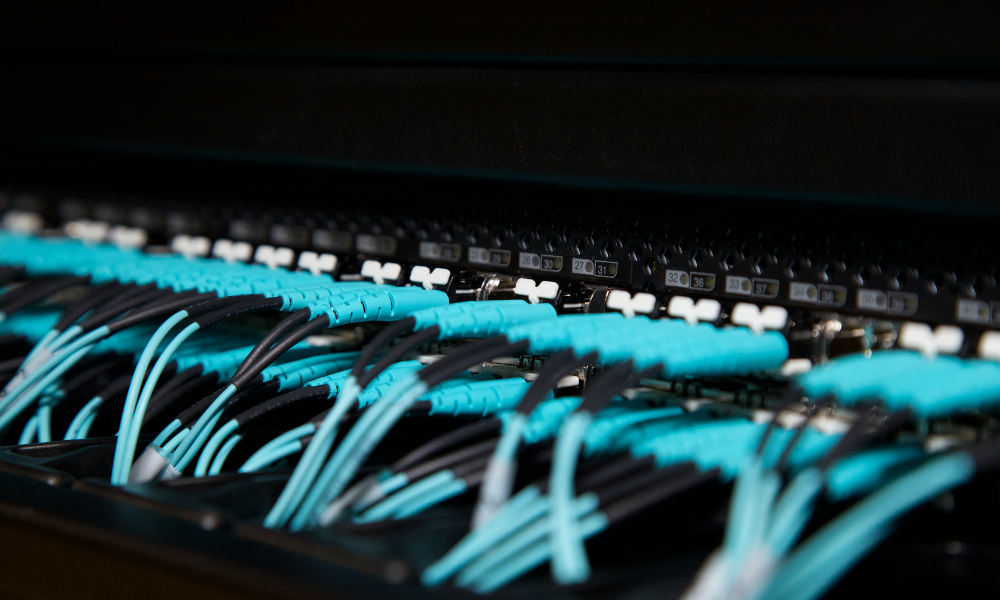As the climate emergency continues, data centres seem to be getting more than a few fingers pointed at them. But what is a data centre? And what is their environmental impact anyway?
With over seven million data centres now open worldwide – accounting for roughly 1.5% of total global energy consumption – it’s worth knowing how you’re already using these facilities in the things you do at home and in your workplace:
What is a data centre?
Data centres are buildings that house huge concentrations of computer servers and networking equipment. The largest are the size of football stadiums with thousands of servers running every hour of every day.
They are the drivers of the digital age. Every time that you send an email, log on to your favourite social media platform, use cloud computing software like Google Docs, or sit down on your sofa to Netflix and chill, the information will arrive at your screen having passed through a data centre.
How you’re already using a data centre
More and more data centres are being created because the drive towards digitalisation is creating more demand. Companies are also outsourcing their need for servers, letting themselves focus on their primary services.
Some companies have their own data centres. Twitter, for example. Some centres house the co-located servers of multiple organisations. Some centres are owned by specialist providers that offer businesses the cost-saving ability to outsource their information storage needs.
However, the vast majority of data centres are owned by Big Tech companies – Amazon, Microsoft, and Google. These three companies alone account for half of all “hyperscale” (that is to say, massive) data centres in the world. Facebook, Apple, and China’s Alibaba are also major players.
This means that if you or any suppliers or companies you interact with use any of the services of these brands, you already use data centres.
Are data centres bad for the environment?
Data centres might be allowing us to live lives of digital fun and productivity. But are they bad for the environment?
Well, they sure use a lot of electricity. Global data centres use roughly the same total amount of electricity as the entire UK. They may be responsible for around 3% of the world’s carbon output (that’s the same amount as the aviation industry).
Data centres also require huge numbers of batteries to operate. Battery production needs lead and other heavy metals. Most centres still use backup diesel generators. There is also serious concern over the toxic nature of the coolants used by some centres.
That’s not to mention the immense energy cost of building new data centres and the infrastructure each one requires. E-waste is created as data centre equipment burns out or is replaced.
Calls to regulate the industry have been growing, especially in the European Union. Several major data centre operators have started to get ahead of this by taking steps towards self-regulation.
Data centres and sustainability
There is a growing global demand for more data centres. Figures for their expected usage will need to encompass the data requirements of new technologies like AI, 5G, self-driving vehicles, cryptocurrency mining, and the continuing spread of streaming services.
However, it’s also worth noting that while 1% or more of total global energy consumption sounds like (and is) a lot, that share seems pretty stable for the past decade. At the same time, global internet traffic is fifteen times larger than it was 10 years ago.
That relatively steady share has been supported by technological advances being incorporated into existing and new data centres to improve energy efficiency. This state of affairs can’t last forever though.
Most data centre operators – including all the major players – are trying to make sustainability improvements. In fact, most have committed themselves to Net Zero by 2030. The key areas where most data centres are improving their sustainability are:
1) Water cooling
As much as 40% of the energy data centres require is used to keep the equipment cool. Water cooling is often the preferred method for this, but there have been related concerns in the past – some of which are being investigated by Thames Water in the UK.
These days, many data centres use non-purified water or water from boreholes rather than water we humans might be able to drink. There are also plans to use “closed loop” systems where more water is never added, rainwater harvesting, and zero water cooling systems.
2) Power consumption
Like other industries, switching to 100% renewable sources of energy like wind and solar power is the automatic win for data centres. Green energy is rapidly becoming more reliable as well as cheaper and cleaner than fossil fuels.
Many data centre providers look to be targeting so-called Power Purchase Agreements to ensure they’re using renewables. Operators also argue that data centres can drive investment in nearby energy grid infrastructure.
3) Back-up diesel generators
Data centres need to be online all the time. If the local energy grid goes down, diesel generators are the standard backup.
Obviously, this is terrible as far as sustainability is concerned. Replacements either already in place or on the drawing board include biofuel generators and hydrogen fuel cells.
Data centres and your business
Arguably like data centres as a whole, these sustainability improvements are key to achieving the world we want to have tomorrow.
We all use data centres, both at home and in our business life. Understanding what they are and how they work is vital if you want your business to be sustainable too.
Want to know more about data storage and how to make yours as sustainable as possible?
Let’s chat about it. Dial A Geek has already helped over 900 businesses in the Bristol area and beyond get the best from their IT – and we have quite a good idea of which cloud-providers are most sustainable.
Discuss your tech with Chief Geek Gildas Jones for FREE and with no commitment – today.

